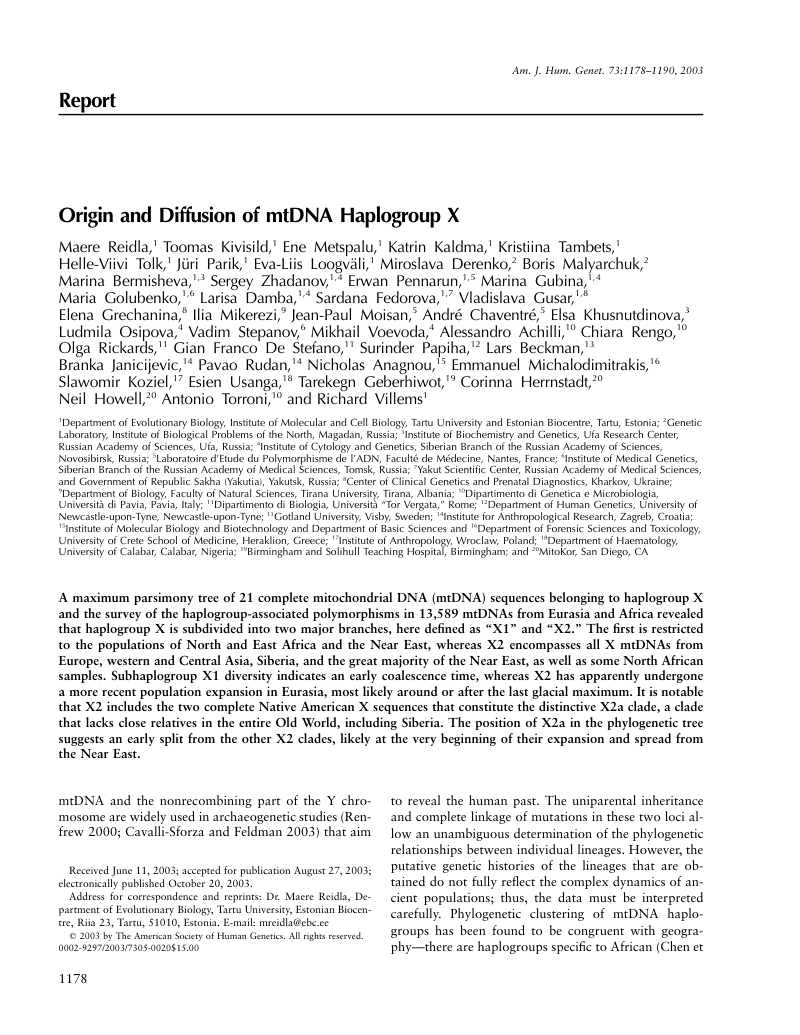Maere Reidla et al. review the evidence for the origin of Haplogroup X in Native American populations.
- Type
- Academic / Technical Report
- Source
- Maere Reidla et al. Non-LDS
- Hearsay
- Direct
- Reference
Maere Reidla et al., “Origin and Diffusion of mtDNA Haplogroup X,” American Journal of Human Genetics 73 (2003): 1178–90
- Scribe/Publisher
- American Journal of Human Genetics
- People
- Maere Reidla et al.
- Audience
- Reading Public
- Transcription
A maximum parsimony tree of 21 complete mitochondrial DNA (mtDNA) sequences belonging to haplogroup X and the survey of the haplogroup-associated polymorphisms in 13,589 mtDNAs from Eurasia and Africa revealed that haplogroup X is subdivided into two major branches, here defined as “X1” and “X2.” The first is restricted to the populations of North and East Africa and the Near East, whereas X2 encompasses all X mtDNAs from Europe, western and Central Asia, Siberia, and the great majority of the Near East, as well as some North African samples. Subhaplogroup X1 diversity indicates an early coalescence time, whereas X2 has apparently undergone a more recent population expansion in Eurasia, most likely around or after the last glacial maximum. It is notable that X2 includes the two complete Native American X sequences that constitute the distinctive X2a clade, a clade that lacks close relatives in the entire Old World, including Siberia. The position of X2a in the phylogenetic tree suggests an early split from the other X2 clades, likely at the very beginning of their expansion and spread from the Near East.
- Citations in Mormonr Qnas
The B. H. Roberts Foundation is not owned by, operated by, or affiliated with the Church of Jesus Christ of Latter-day Saints.

